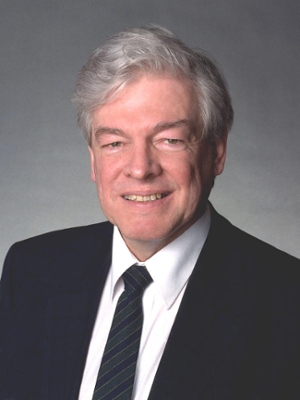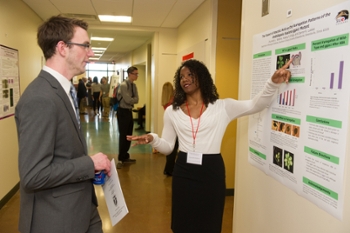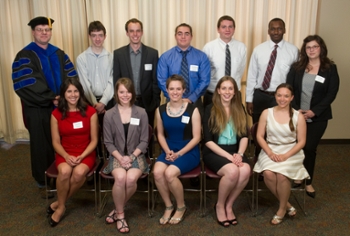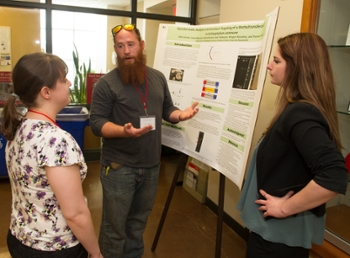As usual, our students have been very active over the past year presenting their research at regional, national, and international conferences and symposia in the form of oral presentations or posters.
Environmental Education Association of Illinois Conference. Canton, Ill. March 11.
Brooke Kottkamp (BS) Students and Teachers Misconceptions on Climate Change Knowledge and Attitudes.
Eastern Prairie Fringed Orchid Conservation Meeting, Morton Arboretum, Morton, Ill., April 9
Hana Thixton (MS) Identification of Site-specific Mycorrhizal Fungi Associates of the Federally Threatened Eastern Prairie Fringed Orchid (Platanthera leucophaea) in Illinois.
International Orchid Conservation Congress, Hong Kong, China, May 16-20
Hana Thixton (MS) - Isolating Orchid Mycorrhizal Fungi from Spiranthes vernalis for Subsequent Seed Germination and Reintroduction.
108th Annual Meeting of the Illinois State Academy of Science, Edwardsville, Ill., April 15-16
Lisa Adden (MS) - Characterization of Molecular Mechanisms of Silver Nanoparticle Toxicity in Escherichia coli (E. coli).
M. Yusuf Ali (MS) - Molecular and Biochemical Characterization of the Wild-Type Drosophila melanogaster that Produces Enhanced Levels of ROS After Exposures to Sub-Lethal Amounts of Ivermectin.
Sudhamadhuri Arvapally (MS) - Developing Coding Tutorials for Educators and Middle School Students.
Ivan Ayala (MS) - The NuA4 Histone Acetyltransferase Complex Affects Epigenetic Regulation of Regeneration in Schmidtea mediterranea.
Sally Ayoob (MS) - Comparative Morphology of the Mandible within Canidae.
Branden Bennet (MS) - Characterization of Brux-Like Motor Patterns: Simultaneous Electromyography and Sonomicrometry.
Jordan Bolletta (BS) - Transformation Rescue of the gps5 Mutant in Arabidopsis.
Courtney Brewer (BS) - Cranial Morphology Distinguishing Two Closely Related Canidae Species.
Amanda Brink (BS) - Comparative Pituitary Growth Hormone Immunostaining in Anolis Lizard Species (Sauria: Iguanidae) that Vary in Body Size.
Luke Brown (BS) - Rescue of the Arabidopsis ggps1-1 Mutant with Meristem-Specific Promoters.
Nicole Brueggemann (BS) - The Effect of Cholesterol and Tocopherol Supplementation on Rapid Cold Hardening and Low Temperature Tolerance.
Brooke Bryson (MS) - Growth and Morphological Impacts of Copper Contamination on Acer negundo (Sapindaceae).
Kathryn Carter (MS) - Osteopontin (OPN) Enhances Migration in Human Salivary Gland (SG) Cancer.
Shelby Chesko (BS) - Quantification of Lead in Central Illinois Birds of Prey.
Peyton Crowe (BS) - Characterization of Smed-htt, the Planarian Homolog of the Human Huntington’s Disease Gene.
Kelly Cusack (BS) - The Effects of the Container, Aeration and Inoculation Optimization of Chlamydomonas reinhardtii Culturing for Use in Biodiesel Research in Introductory Biology Research Laboratories.
Aubree Dahler (MS) - Comparative Functional Osteological Morphology of the Forelimb in Mustelidae.
Allyssa Decker (MS) - Evaluating Native Plant Survival on a Mid-Western Green Roof.
Emily Ehrhardt (BS) - Analysis of Circumnutation in Gravitropism Mutants of Arabidopsis thaliana.
Vineet Garlapally (MS) - Studying the Endocrine Disruption Activity of Environmentally Relevant ZnO Nanoparticles on Xenopus laevis Tadpoles.
Sarah Giacomini (MS) - Comparative Mandibular Morphology in Cervidae.
Victoria Goodwin (MS) - Experimental Inhibition of Corticosterone in Gray Treefrog Tadpoles (Anura: Hyla chrysoscelis and H. versicolor).
Lisa Habenstreit (MS) - Amphibian Diversity and Abundance in Old Artificial Ponds on the SIUE Campus.
Maya Habibi (BS) - Comparing Laser Scanning to Photogrammetry for Capturing 3D Surface of Snail Shells.
Amanda Henderson (BS) - Evaluation of Irrigation Methods on Sedum spp. in Established Midwestern Green Roofs.
Miles Herr (BS) - Gradient in Shell Density in a Riverine Snail, Elimia potosiensis.
Joy Hodge (MS) - Long-Term Success of Sedums on a Midwestern Green Roof.
Nichalas Horn (MS) - Evaluating the Effects of Silver Nanoparticles on Planarians.
Christopher Huff (MS) - The Effect of Hunter-Derived Offal Piles on Local Scavengers.
Jeffrey Iverson (BS) - Construction, Purification and Characterization of Blue and Cyan Fluorescent Protein-Fused Ca2+ Sensing Protein Calmodulin.
Blaine Johnson (BS) - Fitness Disadvantage of the DDT Resistant 91-R Strain of Drosophila melanogaster.
Daniel Karcher (BS) - Lethality or Other Severe Consequences May Accompany Deletion of the Schizophyllum commune G-gamma protein.
Samuel Keck-Flory (MS) - Enzymatic Activity of GGPS-1.
Ashley Keely (MS) - Effects of Pyrethroid Insecticides on Tight Junctions Using an In Vitro Blood-Brain Barrier Model.
Alexis King (MS) - Population Demography and Movement Patterns of the Illinois Chorus Frog, Pseudacris illinoensis, in Southwestern Illinois.
Alexa Kinney (BS) - Morphology of Canid and Felid Scapula Form.
K. Charles Knoth (MS) - Analysis of a Pilot Phase CURE Implementation in an Introductory Biology Course for Science Majors.
Brooke Kottkamp (BS) - Assessment of Climate Change Misconceptions along with Teaching Practices and Student Responses which Aid in Climate Change Education.
Jacob Krisher (MS) - Cell-Matrix Interaction: Activation of MAP kinase Signaling Pathway in Salivary Gland Cells.
Haley Kutosky (BS) - Using 3D Printed Models to Evaluate the Effect of Spines on Hydrodynamic Performance of Snail Shells.
Zack Ladson (BS) - Swimming Kinematics in Gray Treefrog Tadpoles (Anura: Hyla chrysoscelis and H. versicolor) with Predator-Induced Tail Morphology.
Jill La Rue (MS) - Bioinformatic and Knockout Analysis of Two Dicer Genes in Schizophyllum commune.
Lafisu Lasisi (MS) - Does the Invasive Shrub Lonicera maackii (Caprifoliaceae) have a Stratification Requirement?
Kyle Lincoln (BS) - Bioinformatic Analysis and Knockout Targeting of a Methyltransferase Gene in Schizophyllum commune.
Jenelle Mathias (MS) - Optimization of Medium Composition for Growth of Axenic Stanleya pinnata.
Caleb Mau (BS) - Thermal Benefits of Different Weeding Methods of Green Roof Systems.
Mallory Maves (MS) - Recruiting East St. Louis: Strategies for STEM Student Program Retention In an AtRisk Community.
Lalita Mazgaeen (MS) - Differential RNAi Approaches to Enhance Knockdown Efficiency of Target Gene Transcripts in the Highly DDT-Resistant 91-R Strain of Drosophila melanogaster.
Tyler McGowan (BS) - Karyotype of Topminnows in the Fundulus notatus Species Complex.
Drew Merideth (BS) - Detecting Incremental Growth Markers in the Shells of Lotic Snails.
Brittany Mersman (BS) - Use of RNAi Knockdown of Three Nervous System Genes to Determine Effects on Memory in Planarians.
Lucas Meyer (BS) - Relationships between Shell and Soft Body Characters in Two Syntopic Snails.
Daniel Miller (BS) - Sexual Dimorphism in Gray Wolf (Canis lupus) Mandible Form.
Callie Mincy (BS) - Effects of Cancerous Matrix on Normal Salivary Gland Cells.
Ryan Momenteller (BS) - Construction of a Timeline for Morphogenesis and Sporulation in Schizophyllum umbrinum.
Allison Newton (BS) - Analysis of Berberine Family Genes Potentially Involved in Chlorophyll and Carotenoid Synthesis.
Rebecca Ngo (BS) - Study of Interaction between Neutral Coomassie Brilliant Blue Species and Bovine Serum Albumin.
Breanna Olliges (BS) - Predator Induced Differences in Tail Morphology and Muscle Fiber Composition in Gray Treefrogs (Anura: Hyla chrysoscelis and H. versicolor).
Christine Olson (BS) - Investigating the Use of 3D Technology to Create a Taxon that Does Not Exist: Generating Morphological Variation in the Pleuroceridae.
Ummul Vara Qurratul NLN (MS) - Chromosome Number of Euphorbia rosescens (Euphorbiaceae) or Scrub Spurge a Florida State Endangered Species.
Luke Revelt (BS) - Analysis of the Geranyl Geranyl Diphosphate Synthase Family in Arabidopsis thaliana.
Rachel Rodgers (MS) - Phylogenomic Analysis of 16 Fundulus Species Using RNA-seq Data.
Alexis Ronan (BS) - The Effect of Elevated and Variable Winter Temperatures on Metabolic Rate, Body Mass and Water Content of the Goldenrod Gall Fly, Eurosta solidaginis.
Kyle Schafer (BS) - The Conformational Changes of the 3rd and 4th EF-Hands of Calmodulin are Important for the Recognition of Fas-Associated Death Domain.
Melinda Schneitz (BS) - The Effects of GFMRFamide on the Crop and Gizzard of Lumbricus terrestris.
William Schryver (BS) - RNA-seq Analysis of the Variegated Phenotype of the Arabidopsis thaliana ggps1 Mutant.
Kimberly Shoemaker (MS) - Bioaccumulation of Mercury and Selenium in Fish in the Lower Illinois River.
Parminder Singh (BS) - Relationship Between Growth Hormone Receptors and the Body Size Differences in Anolis Lizards (Sauria: Iguanidae).
Alexander Smith (BS) - Food Limitation as a Hypothesis Explaining Stream Gradients in Morphology in a Freshwater Snail.
Kayla Tatum (BS) - Weeding Maintenance of Green Roof Systems.
Thomas Teague (BS) - Have We Seen Enough? Quantifying the Extent of Behavior Displayed by Serine Proteases in a Molecular Dynamic Simulation.
Hana Thixton (MS) - Genetic Diversity of Northern and Southern Orchid Mycorrhizae Found in the Federally Threatened Eastern Prairie Fringed Orchid (Platanthera leucophaea).
Toria Trost (BS) - Characterization of the Planarian SWI/SNF-Related Chromatin Remodeling Complexes.
Ranjitha Uppala (MS) - Effects of Chemical Speciation on Selenium Accumulation in Fungal Mycelia.
Jhunnelle Walters (BS) - The Impact of Abscisic Acid on the Variegation Patterns of the Arabidopsis thaliana ggps1 Mutant.
Jun Wang (MS) - Microbial Transformation and Volatilization of Elemental Selenium Nanoparticles.
Benjamin Wedeking (BS) - Skeletal Correlates of Stream Gradient Morphological Variation in Largescale Stonerollers (Campostoma oligolepis) (Cypriniformes: Cyprinidae).
Jessica Westerhold (BS) - Analysis of the Gravity Persistent Signal 5 (gps5) Mutant in Arabidopsis thaliana.
International Association for Vegetation Science 59th Annual Symposium, Pirenópolis, Brazil, June 12-17
Noah Dell (MS) - Assessing the robustness of clustering methods for classification of vegetation data.
St. Louis Ecology, Evolution and Conservation Retreat, Principia College, Elsah, Ill., September 17
Amanda Markovich (BS) - Assessment of Prezygotic Reproductive Isolation among Topminnows in an Artificial Stream System.
Rachel Rodgers (MS) - Phylogenomic Analysis of 16 Fundulus Species using RNA-seq Data.
Hana Thixton (MS) - Isolating Orchid Mycorrhizal Fungi from Spiranthes vernalis for Subsequent Seed Germination and Reintroduction.
Missouri Botanical Gardens 63rd Fall Symposium, Missouri Botanical Gardens, St. Louis, Mo., October 8
Hana Thixton (MS) Identification of site-specific mycorrhizal fungi associates of the federally threatened Eastern Prairie Fringed Orchid (Platanthera leucophaea) in Illinois.

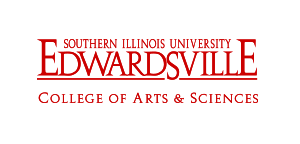
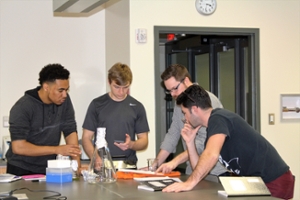
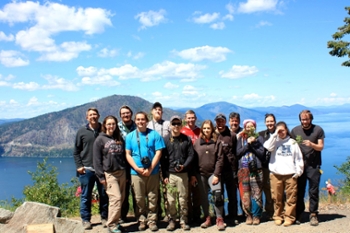
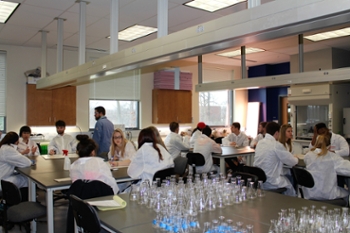
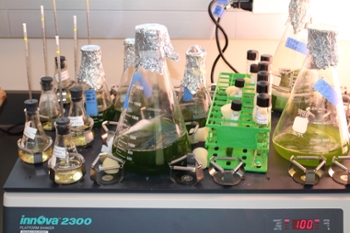 CURE labs provide research experience to whole classes of students and are reported in the literature to increase retention in STEM disciplines. By focusing on a freshman level course, the researchers will expose far more students to the research experience earlier in their academic progression. The research is being conducted in collaboration with the campus STEM and NCERC Centers, and the Biological Sciences team includes Dr. Kelly Barry, associate professor of Biological Sciences, Christine Simmons, instructor of Biological Sciences, and graduate student Charles Knoth Jr. An assessment of the lab experience outcomes will determine if students participating in the CURE lab increase their a) self-efficacy in science through understanding of the research process and inquiry practices, b) sense of belonging to a science community, c) science identity, and d) retention in STEM academic programs. The researchers hypothesize that increased project ownership will positively influence the sense of belonging to a science community. Both sense of community and science identity are directly linked to the long-term goal of persistence in science.
CURE labs provide research experience to whole classes of students and are reported in the literature to increase retention in STEM disciplines. By focusing on a freshman level course, the researchers will expose far more students to the research experience earlier in their academic progression. The research is being conducted in collaboration with the campus STEM and NCERC Centers, and the Biological Sciences team includes Dr. Kelly Barry, associate professor of Biological Sciences, Christine Simmons, instructor of Biological Sciences, and graduate student Charles Knoth Jr. An assessment of the lab experience outcomes will determine if students participating in the CURE lab increase their a) self-efficacy in science through understanding of the research process and inquiry practices, b) sense of belonging to a science community, c) science identity, and d) retention in STEM academic programs. The researchers hypothesize that increased project ownership will positively influence the sense of belonging to a science community. Both sense of community and science identity are directly linked to the long-term goal of persistence in science.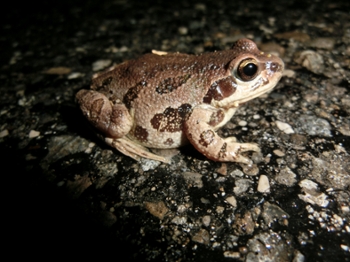
 On a related note, Lisa Hebenstreit was recently awarded a graduate student intern position with the Illinois Department of Natural Resources (IDNR). This is a highly competitive program with only eight positions being awarded on an annual basis. The program is designed for students who are nearing completion of their graduate work. Lisa’s position is located at IDNR headquarters in Springfield. She is gaining valuable hands-on experience in wildlife biology, including endangered species monitoring and habitat management. In addition, part of her internship duties include continued monitoring of Illinois Chorus Frogs through bioacoustic surveys.
On a related note, Lisa Hebenstreit was recently awarded a graduate student intern position with the Illinois Department of Natural Resources (IDNR). This is a highly competitive program with only eight positions being awarded on an annual basis. The program is designed for students who are nearing completion of their graduate work. Lisa’s position is located at IDNR headquarters in Springfield. She is gaining valuable hands-on experience in wildlife biology, including endangered species monitoring and habitat management. In addition, part of her internship duties include continued monitoring of Illinois Chorus Frogs through bioacoustic surveys.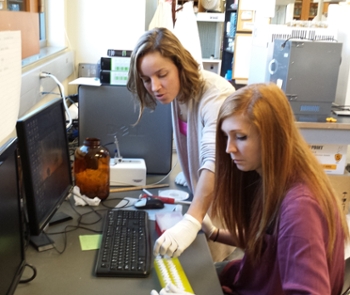
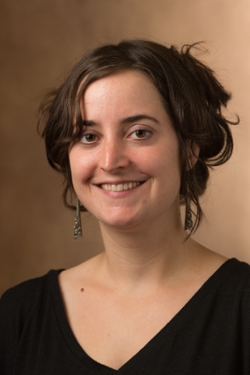 Dr. DiSalvo joins SIUE as virologist and microbiologist. She comes to us from a postdoctoral fellowship position at Washington University where she has been studying the microbiome of the soil amoeba Dictyostelium discoideum in the Strassmann/Queller lab. DiSalvo earned her PhD at Brown University in 2012 where she studied prions in a yeast model system. Her research background includes studies involving bacteriophages as well. At SIUE DiSalvo and her students will continue studies of the causes and consequences of amoeba-bacteria symbiosis, and she will be teaching a variety of courses, including virology and microbiology.
Dr. DiSalvo joins SIUE as virologist and microbiologist. She comes to us from a postdoctoral fellowship position at Washington University where she has been studying the microbiome of the soil amoeba Dictyostelium discoideum in the Strassmann/Queller lab. DiSalvo earned her PhD at Brown University in 2012 where she studied prions in a yeast model system. Her research background includes studies involving bacteriophages as well. At SIUE DiSalvo and her students will continue studies of the causes and consequences of amoeba-bacteria symbiosis, and she will be teaching a variety of courses, including virology and microbiology.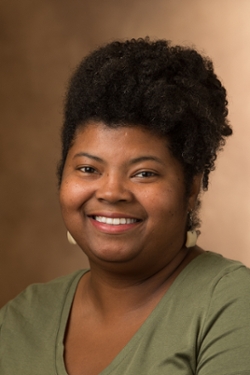 Dr. Lee is an animal behavior biologist who has been in a postdoctoral research position at Cornell University where she has been examining African giant pouched rat behavioral biology. Her work has included extensive field research in Tanzania. Dr. Lee earned her PhD at University of Missouri – St. Louis in 2010 where she conducted behavioral studies on prairie voles. Dr. Lee’s courses at SIUE will include mammalogy, animal behavior, and urban ecology. Dr. Lee is very active in outreach and diversity advocacy in the sciences, having been a TED fellow, and recognized for her social media influence by EBONY Magazine, the Grio’s 100, and as a White House Champion of Change. Dr. Lee blogs as
Dr. Lee is an animal behavior biologist who has been in a postdoctoral research position at Cornell University where she has been examining African giant pouched rat behavioral biology. Her work has included extensive field research in Tanzania. Dr. Lee earned her PhD at University of Missouri – St. Louis in 2010 where she conducted behavioral studies on prairie voles. Dr. Lee’s courses at SIUE will include mammalogy, animal behavior, and urban ecology. Dr. Lee is very active in outreach and diversity advocacy in the sciences, having been a TED fellow, and recognized for her social media influence by EBONY Magazine, the Grio’s 100, and as a White House Champion of Change. Dr. Lee blogs as 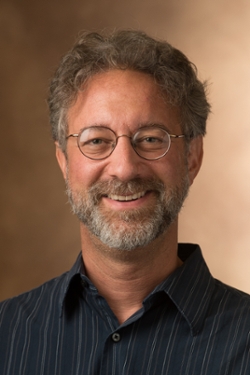 Dr. Greenfield arrives at SIUE having completed his PhD at the University of California – Berkeley where he modeled environmental antibiotic resistance emergence, and also multivariate spatial patterns in environmental hazards. Prior to his work at Berkeley, Dr. Greenfield spent twelve years at the San Francisco Estuary Institute where he specialized in human health risks and policy implications of chemical contaminants. At SIUE, Dr. Greenfield will have a joint appointment between Biological Sciences and Environmental Sciences where he will be offering courses critical to the new undergraduate major in environmental science.
Dr. Greenfield arrives at SIUE having completed his PhD at the University of California – Berkeley where he modeled environmental antibiotic resistance emergence, and also multivariate spatial patterns in environmental hazards. Prior to his work at Berkeley, Dr. Greenfield spent twelve years at the San Francisco Estuary Institute where he specialized in human health risks and policy implications of chemical contaminants. At SIUE, Dr. Greenfield will have a joint appointment between Biological Sciences and Environmental Sciences where he will be offering courses critical to the new undergraduate major in environmental science.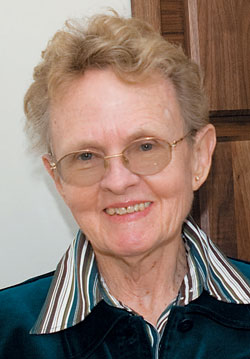 In March, Professor Emerita Dr. F. Marian Smith passed away peacefully at home in Edwardsville, surrounded by family and friends. Smith earned a BS in Mathematics from Midwestern State University in Wichita Falls, Texas, a MEd in Biology at Southwestern Oklahoma State University, and a PhD in Botany from Kansas University in Lawrence. She joined SIUE in 1987 and began a 21-year career as a teacher-scholar, reaching the rank of distinguished research professor several years before her retirement in 2008. She is best known for her work on rare and endangered plants, such as Boltonia decurrens, which is native to the floodplains of the Illinois and Mississippi Rivers, and Schoenoplectiella hallii, a species with a disjunct distribution in the Midwest and Eastern US. Smith was an accomplished botanist and population ecologist, who mentored many undergraduate and graduate students and was an active and very productive member of the department. Mike Penskar, a former botanist with the Michigan Heritage Program who collaborated with Marian on Schoenoplectiella hallii research wrote, “Her students were clearly guided by the hands of a wise teacher, and I believe that this shows through in the high quality of studies that they engaged in and produced. Thus in addition to being a talented researcher and botanist, I believe that Marian was a gifted mentor, the type that catalyzes the interests of students and launches productive careers. Many professors can produce prodigious amounts of literature, and many can influence and guide students, but too few can do both. SIUE was very fortunate to have had Marian Smith as an esteemed professor. All can take some solace in knowing that her work will continue to guide ongoing and future research, and I for one will keep her in my thoughts.”
In March, Professor Emerita Dr. F. Marian Smith passed away peacefully at home in Edwardsville, surrounded by family and friends. Smith earned a BS in Mathematics from Midwestern State University in Wichita Falls, Texas, a MEd in Biology at Southwestern Oklahoma State University, and a PhD in Botany from Kansas University in Lawrence. She joined SIUE in 1987 and began a 21-year career as a teacher-scholar, reaching the rank of distinguished research professor several years before her retirement in 2008. She is best known for her work on rare and endangered plants, such as Boltonia decurrens, which is native to the floodplains of the Illinois and Mississippi Rivers, and Schoenoplectiella hallii, a species with a disjunct distribution in the Midwest and Eastern US. Smith was an accomplished botanist and population ecologist, who mentored many undergraduate and graduate students and was an active and very productive member of the department. Mike Penskar, a former botanist with the Michigan Heritage Program who collaborated with Marian on Schoenoplectiella hallii research wrote, “Her students were clearly guided by the hands of a wise teacher, and I believe that this shows through in the high quality of studies that they engaged in and produced. Thus in addition to being a talented researcher and botanist, I believe that Marian was a gifted mentor, the type that catalyzes the interests of students and launches productive careers. Many professors can produce prodigious amounts of literature, and many can influence and guide students, but too few can do both. SIUE was very fortunate to have had Marian Smith as an esteemed professor. All can take some solace in knowing that her work will continue to guide ongoing and future research, and I for one will keep her in my thoughts.”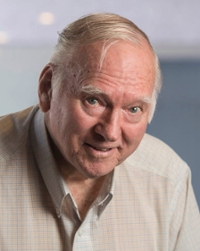 In July, we received the sad news that Professor Emeritus Dr. Ralph W. Axtell had passed away at his residence in Edwardsville. Axtell obtained his PhD in 1958 from the University of Texas – Austin and in 1960 he was appointed to the faculty of SIUE while it was still housed in Alton. As a founding member of the Department of Zoology and later the Department of Biological Sciences, Axtell taught generations of undergraduate and graduate students and mentored many of them in his research lab. Axtell developed a national reputation for the excellence of his research in herpetology, including the description of eight new species or subspecies. In 2006, a lizard, Sceloporus poinsettia axtelli was named in his honor by Robert G. Webb. On his retirement in 2014, Axtell was the longest-serving tenured Professor in the university’s history. He was a lifelong supporter of SIUE, and through his generous donations an endowment was set up to support research and teaching in ecology and organismal biology. In recognition of his support, a teaching lab in the Science West Building was named the “Ralph Axtell Biology Laboratory.” In addition, in honor of our respected professor emeritus, the lecture series associated with our annual celebration of Darwin Day was named the “Ralph W. Axtell Lecture Series.” In the words of Interim Chancellor Professor Stephen Hansen, “Ralph Axtell was one of the ‘founding fathers’ of SIUE. An outstanding teacher and scholar, Ralph laid the groundwork for SIUE’s future by setting the standard for excellence. Over his long career, he helped build SIUE into a nationally recognized university.”
In July, we received the sad news that Professor Emeritus Dr. Ralph W. Axtell had passed away at his residence in Edwardsville. Axtell obtained his PhD in 1958 from the University of Texas – Austin and in 1960 he was appointed to the faculty of SIUE while it was still housed in Alton. As a founding member of the Department of Zoology and later the Department of Biological Sciences, Axtell taught generations of undergraduate and graduate students and mentored many of them in his research lab. Axtell developed a national reputation for the excellence of his research in herpetology, including the description of eight new species or subspecies. In 2006, a lizard, Sceloporus poinsettia axtelli was named in his honor by Robert G. Webb. On his retirement in 2014, Axtell was the longest-serving tenured Professor in the university’s history. He was a lifelong supporter of SIUE, and through his generous donations an endowment was set up to support research and teaching in ecology and organismal biology. In recognition of his support, a teaching lab in the Science West Building was named the “Ralph Axtell Biology Laboratory.” In addition, in honor of our respected professor emeritus, the lecture series associated with our annual celebration of Darwin Day was named the “Ralph W. Axtell Lecture Series.” In the words of Interim Chancellor Professor Stephen Hansen, “Ralph Axtell was one of the ‘founding fathers’ of SIUE. An outstanding teacher and scholar, Ralph laid the groundwork for SIUE’s future by setting the standard for excellence. Over his long career, he helped build SIUE into a nationally recognized university.”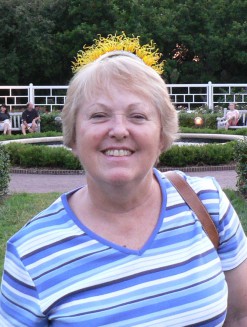 In August, we were once again saddened to hear of the passing of Mary Corle “Pete” Rast, who had been Lab Manager in the Department of Biological Sciences for 45 years. Born at Christian Welfare Hospital in East St. Louis in 1944, Rast was a cheerleader and a graduate of East St. Louis Senior High School. She was awarded the W. T. Grant Foundation College Scholarship, which enabled her to attend and graduate from Monmouth College. Rast was known to our faculty, staff and students for her smile and pleasant personality. She loved watching birds and wildlife, gardening, and traveling with her husband, Bob Cunningham. Through that travel she became well known and loved by the hockey community throughout the nation. She was a passionate St. Louis Blues fan. In recognition of her years of devoted service to the department and our students, a new annual senior award named in her honor will be awarded to a senior Biological Sciences student in the Ecology, Evolution and Conservation degree concentration for academic excellence and a demonstrated commitment to conservation or community outreach.
In August, we were once again saddened to hear of the passing of Mary Corle “Pete” Rast, who had been Lab Manager in the Department of Biological Sciences for 45 years. Born at Christian Welfare Hospital in East St. Louis in 1944, Rast was a cheerleader and a graduate of East St. Louis Senior High School. She was awarded the W. T. Grant Foundation College Scholarship, which enabled her to attend and graduate from Monmouth College. Rast was known to our faculty, staff and students for her smile and pleasant personality. She loved watching birds and wildlife, gardening, and traveling with her husband, Bob Cunningham. Through that travel she became well known and loved by the hockey community throughout the nation. She was a passionate St. Louis Blues fan. In recognition of her years of devoted service to the department and our students, a new annual senior award named in her honor will be awarded to a senior Biological Sciences student in the Ecology, Evolution and Conservation degree concentration for academic excellence and a demonstrated commitment to conservation or community outreach.